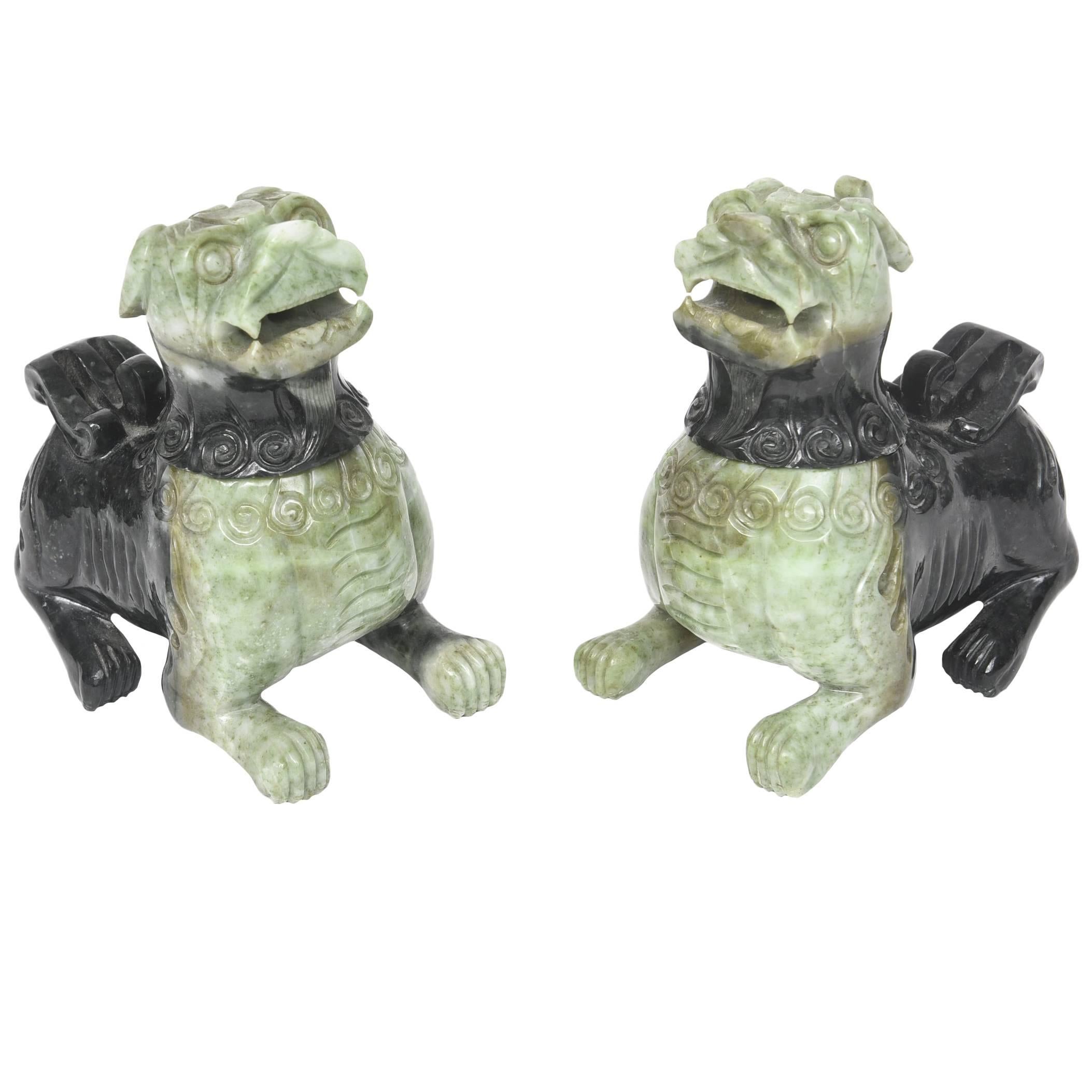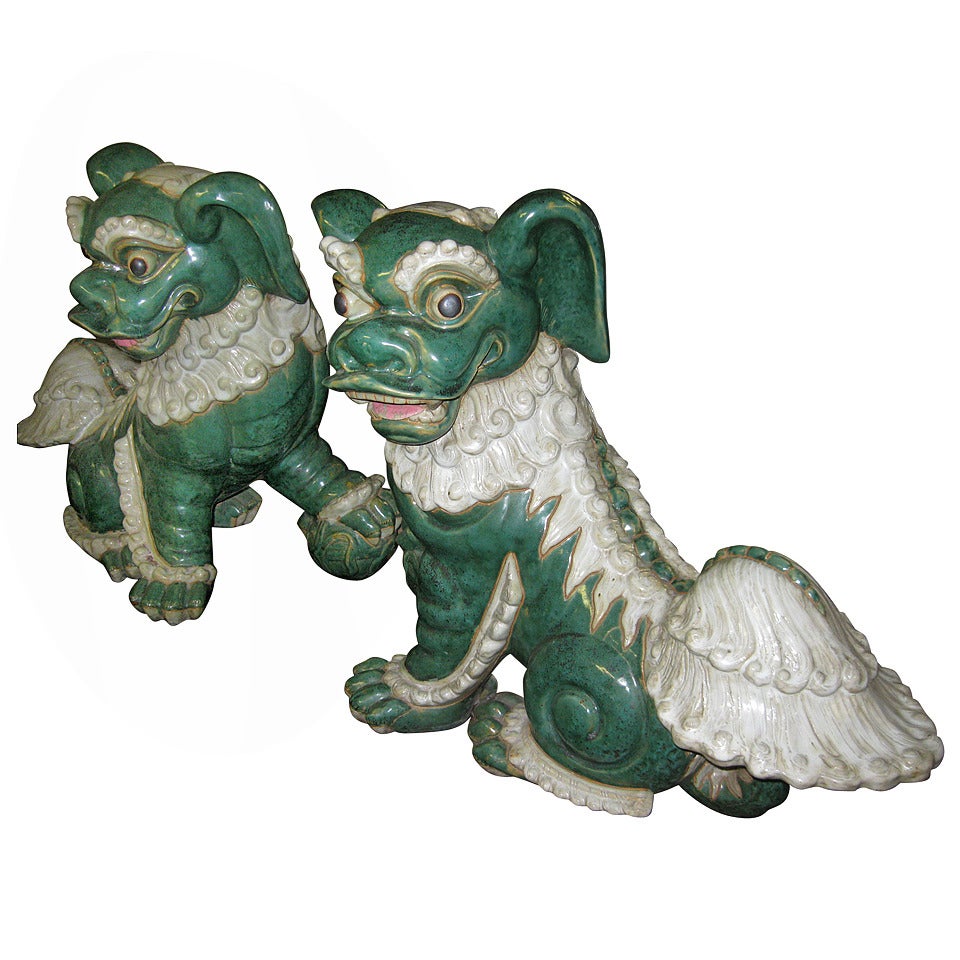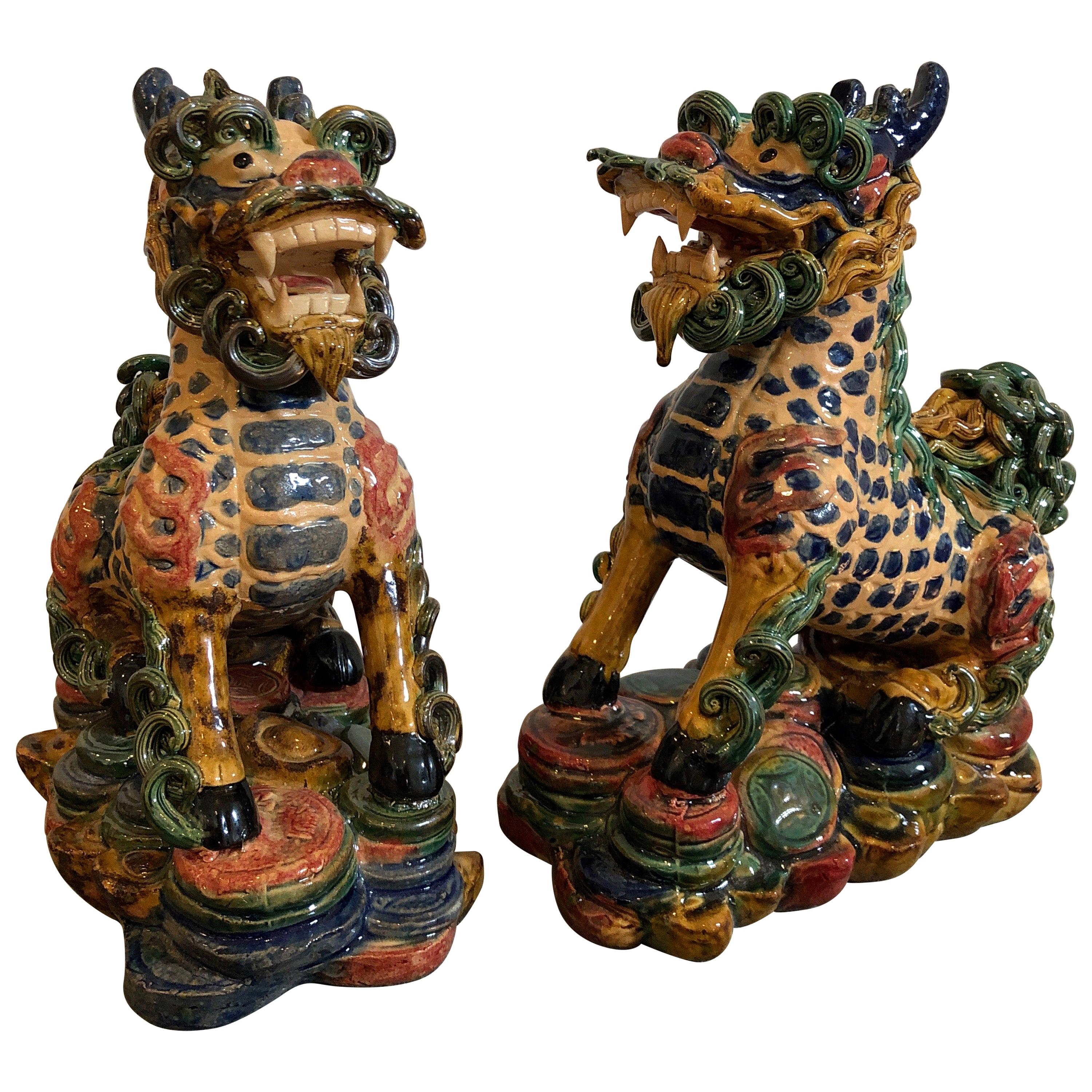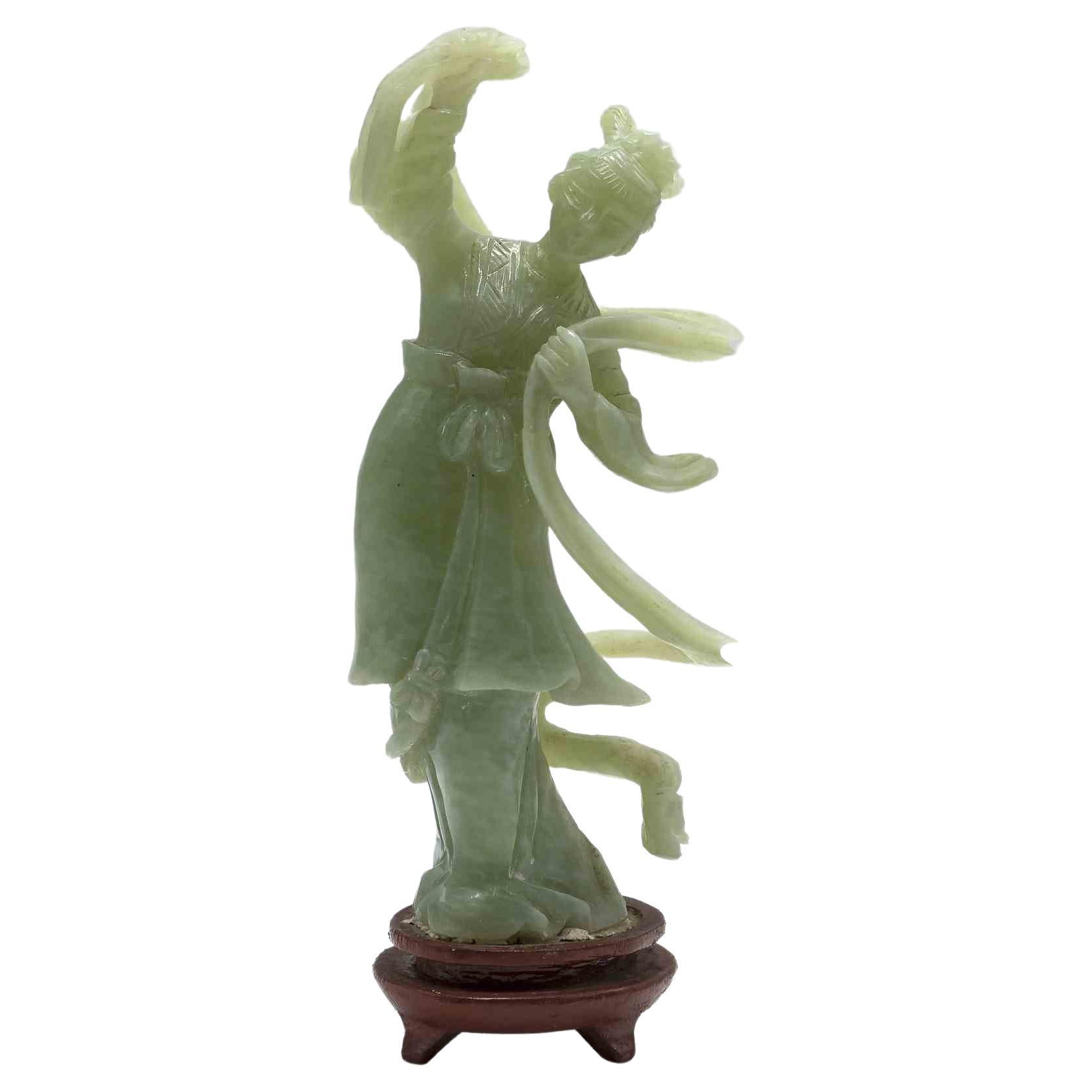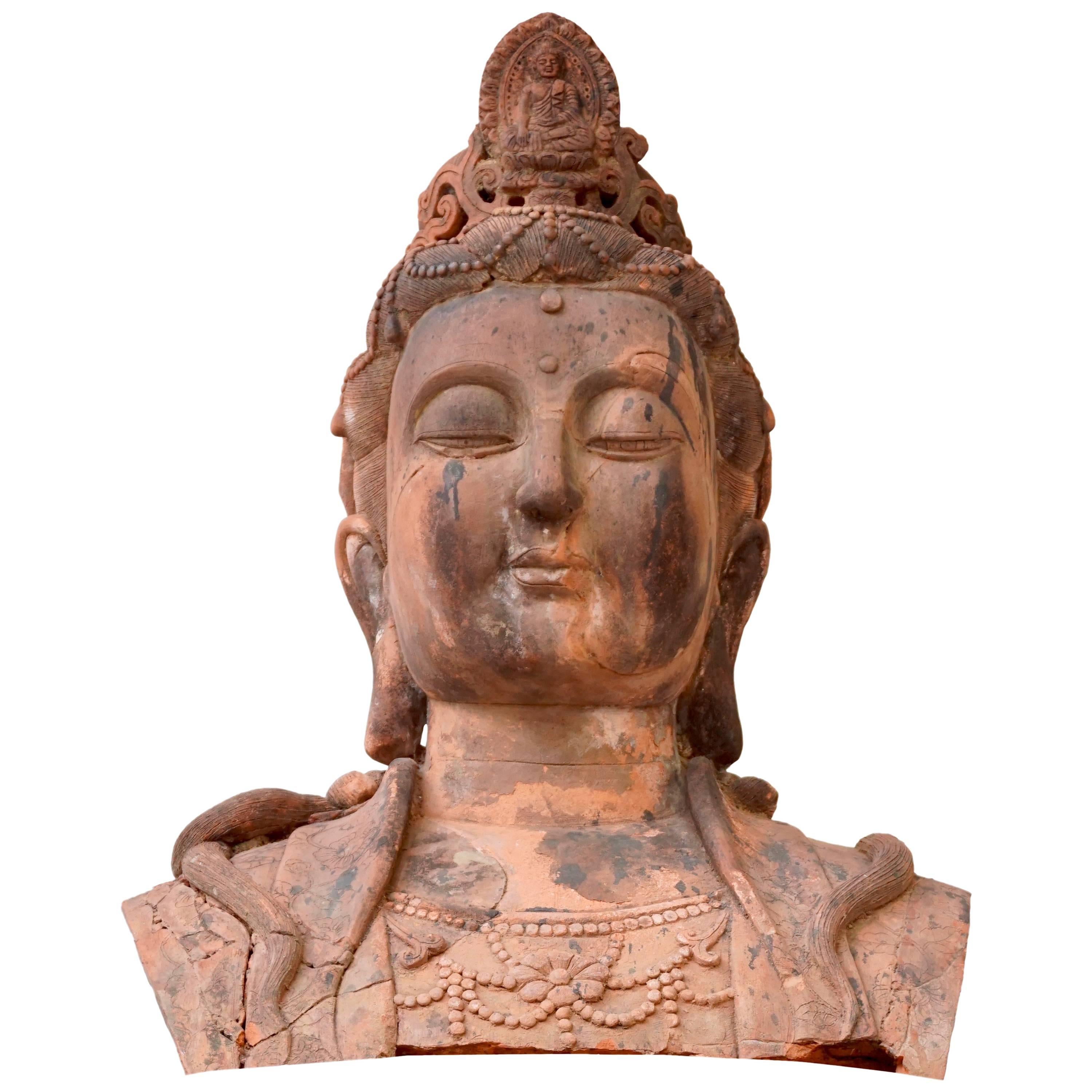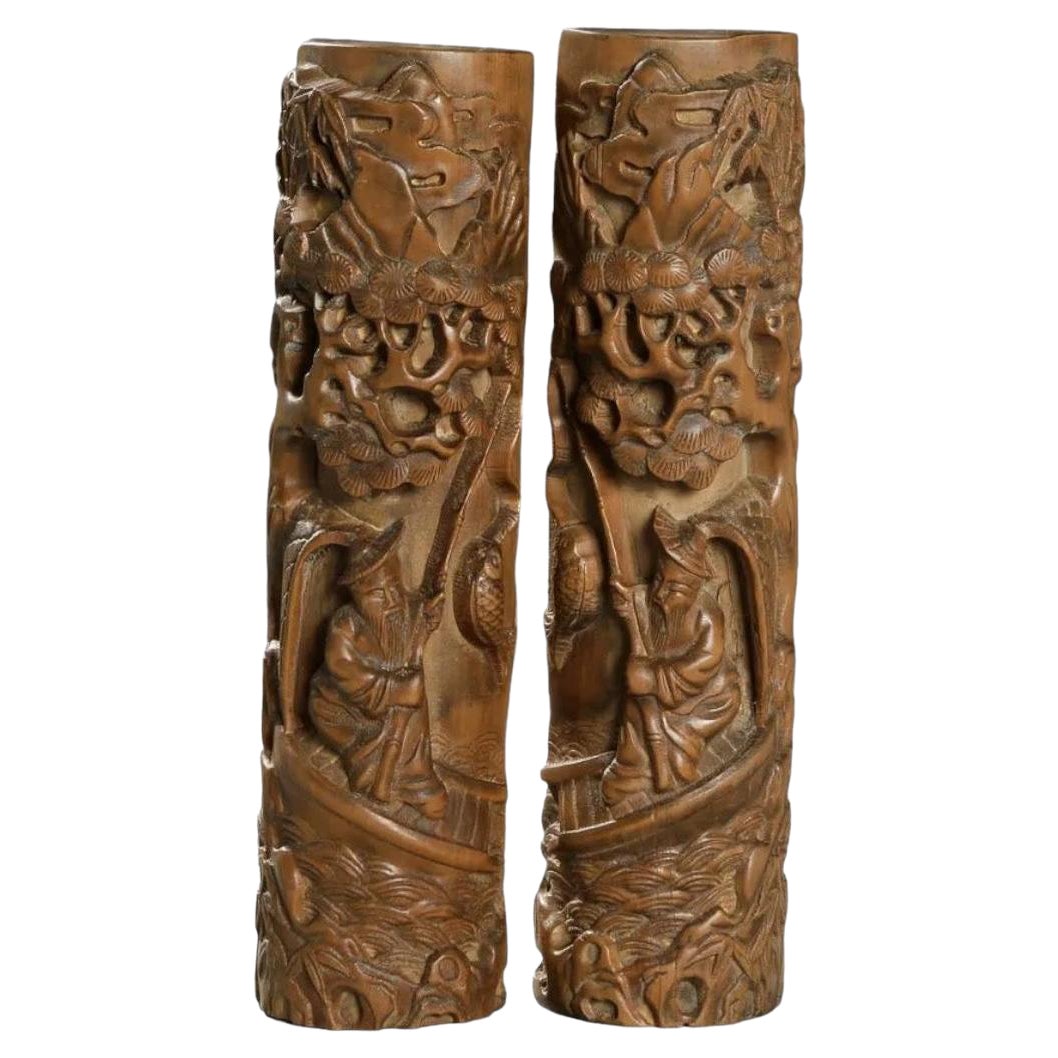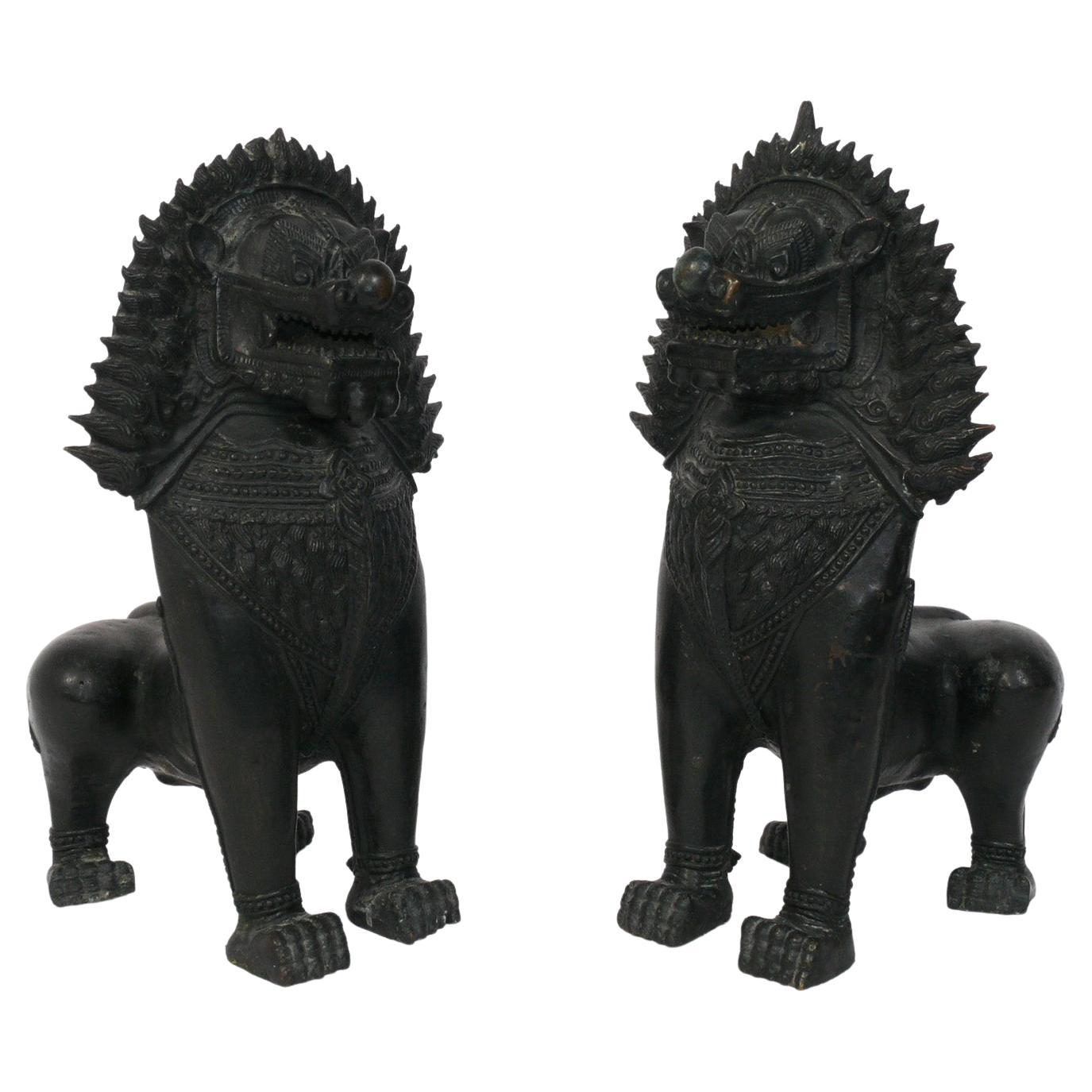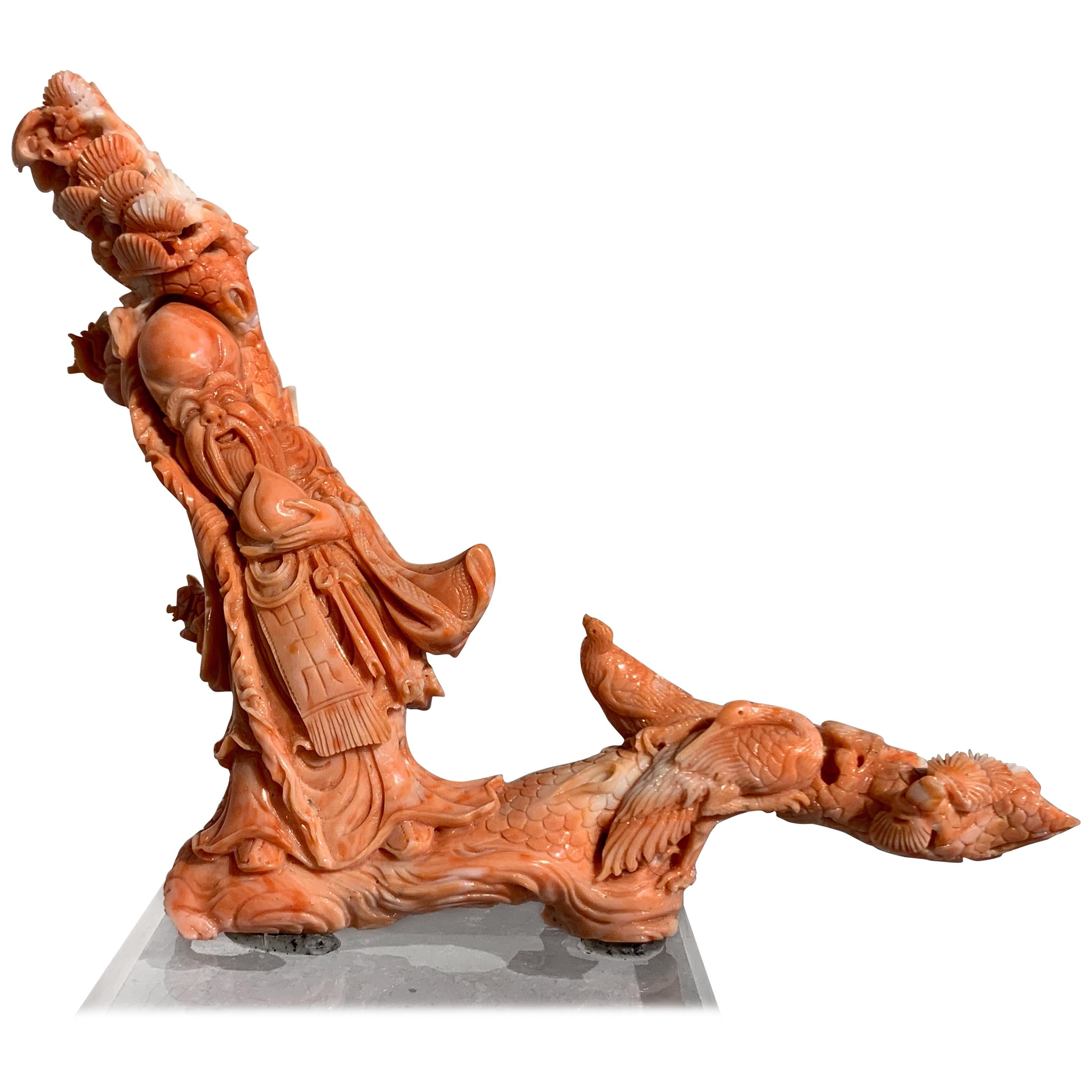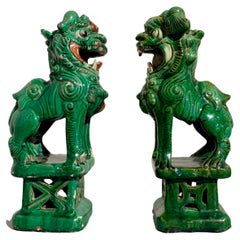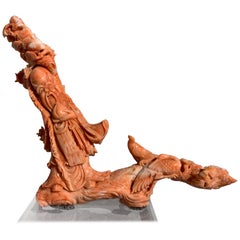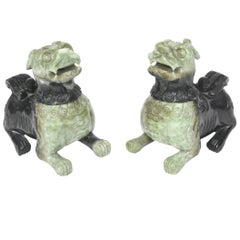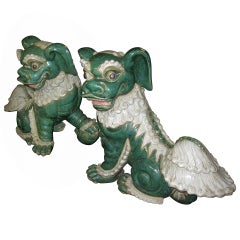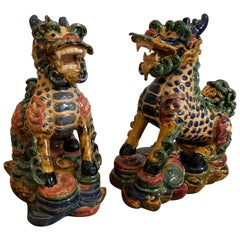
Collection of 16 Chinese Yellow Glazed Foo Dogs, Early 20th Century, China
View Similar Items
Want more images or videos?
Request additional images or videos from the seller
1 of 18
Collection of 16 Chinese Yellow Glazed Foo Dogs, Early 20th Century, China
About the Item
- Dimensions:Height: 12.25 in (31.12 cm)Width: 6 in (15.24 cm)Depth: 4 in (10.16 cm)
- Sold As:Set of 16
- Style:Chinese Export (Of the Period)
- Materials and Techniques:Ceramic,Glazed
- Place of Origin:
- Period:
- Date of Manufacture:1890s-1930s
- Condition:Wear consistent with age and use. Minor fading. No chips, cracks or repairs noted. One of the smaller lions with the eyes worn. Some of the glazes slightly faded.
- Seller Location:Austin, TX
- Reference Number:1stDibs: LU894723220012
About the Seller
5.0
Platinum Seller
These expertly vetted sellers are 1stDibs' most experienced sellers and are rated highest by our customers.
Established in 2001
1stDibs seller since 2010
306 sales on 1stDibs
Typical response time: 1 hour
More From This SellerView All
- Chinese Green Glazed Foo Lions, Near Pair, Late 19th Century, ChinaLocated in Austin, TXA charming near pair of Chinese green glazed foo lion joss stick holders, late 19th century, China. The delightful foo lions, also referred to as foo dogs, crafted as joss (incens...Category
Antique Late 19th Century Chinese Qing Sculptures and Carvings
MaterialsStoneware
- Chinese Carved Coral Figure of Shou Lao, Early 20th CenturyLocated in Austin, TXA wonderfully Chinese carved coral branch in the form of Shou Lao, also called Shouxing, the Chinese god of longevity, Republic period, early ...Category
Early 20th Century Chinese Qing Sculptures and Carvings
MaterialsCoral
- Chinese Ming Dynasty Glazed Tall Attendant Figure, 16th-17th Century, ChinaLocated in Austin, TXA tall Chinese green and amber glazed figure of an attendant, Ming Dynasty, 16th-17th century, China. The figure stands upon an integral plinth, dressed in long robes...Category
Antique 17th Century Chinese Ming Sculptures and Carvings
MaterialsPottery
- Japanese Bronze Okimono of a Carp, Taisho Period, Early 20th Century, JapanLocated in Austin, TXAn elegant Japanese cast bronze okimono of a swimming carp, Taisho Period (1912 - 1926), early 20th century, Japan. The graceful fish portrayed realistically in motion, as if swimmi...Category
Vintage 1920s Japanese Taisho Sculptures and Carvings
MaterialsBronze
- Chinese Bronze Fighting Foo Lions Censer, Qing Dynasty, Late 19th Century, ChinaLocated in Austin, TXA fantastic Chinese cast bronze censer in the form of two Buddhistic lions play fighting, late Qing Dynasty, late 19th century, China. The censer formed as a pair of Buddhistic li...Category
Antique Early 1900s Chinese Qing Sculptures and Carvings
MaterialsBronze
- Pair Large Chinese Ming Dynasty Glazed and Painted Pottery Figures, 16th CenturyLocated in Austin, TXA striking pair of large Chinese glazed and painted pottery figures, Ming Dynasty (1368 to 1644), circa 16th century, China. The impressive and realistically modeled figures each portrayed standing upright upon a sancai (three color) glazed pedestal of kang table form. The man is dressed in a short black surcoat over a long robe and pants, a smart cap upon his head. His face is warm and welcoming, with wide eyes and a slight smile on his lips. He holds his hands out in front of him, palms up, almost as if shrugging, though presumably originally holding an object or offering, now lost. The woman of slightly smaller stature, and dressed in a longer surcoat over a long robe and skirt. She wears a fitted cap upon her head. Her hands also held out in front, grasping long lost objects. Her face is slightly more severe, with a somewhat pinched look, and slight frown upon her lips. The size of these figures is remarkable, as is the realism and attention to detail, almost as if they were modeled after real people, as opposed to the more common and generic Ming Dynasty pottery...Category
Antique 16th Century Chinese Ming Sculptures and Carvings
MaterialsPottery
You May Also Like
- Mid-20th Century Pair of Chinese Carved Green Hardstone Foo Dogs / LionsLocated in Miami Beach, FLBi-color green hardstone carved to represent a pair of traditional Chinese foo dogs and lions. The heads of these impressive creatures come off so they can be used as incense burners.Category
Mid-20th Century Chinese Animal Sculptures
MaterialsOther
$1,200 Sale Price52% Off - Late 19th century Pair of Glazed Porcelain Foo DogsLocated in Savannah, GAExtraordinary pair of fine glazed porcelain Foo dogs came to us out of an estate here in Savannah, Georgia, belonging to an old general that long ago brought them from Thailand. Used...Category
Antique 1890s Chinese Qing Sculptures and Carvings
MaterialsPorcelain
$27,500 / set - Exquisite Pair of Glazed Porcelain Foo DogsLocated in Los Angeles, CAExtraordinary pair of fine glazed porcelain Foo Dogs. Incredible hand made details.Category
Antique Late 19th Century Chinese Qing Sculptures and Carvings
MaterialsPorcelain
$6,240 Sale Price20% Off - Two Chinese Wood Lion Foo Dogs Incense HolderLocated in North Hollywood, CATwo Chinese wood Foo Dogs Incense holder burners. Featuring a pair of highly detailed lion foo dogs, one male and one female which were thought to protect the home from harmful spiritual influences and harmful people that might be a threat. The Foo Dogs...Category
Late 20th Century Chinese Chinese Export Sculptures and Carvings
MaterialsWood
- Vintage Chinese Serpentine Sculpture, China, Early 20th CenturyLocated in Roma, ITVintage Chinese serpentine sculpture is a traditional decorative object realized in china in the early 20th century. Serpentine m...Category
Early 20th Century Japanese Figurative Sculptures
MaterialsMarble, Serpentine
- Larger Than Life Terracotta Buddha Bust of Guanyin, Early 20th Century, ChinaLocated in Antwerp, BEA massive larger than life terracotta buddha bust of Guan Yin, China, early 20th century. Broken and restored with wear and tear from enduring exposure to the elements. Size: 75 cm high. Weight: 40 kg. Guanyin, Kwanyin, Guanshiyin or Guanyin Pusa is the Chinese interpretation of the bodhisattva Avalokiteśvara (the goddess of comfort and mercy). In addition, she is seen in Taoism as an immortal. The scripture dedicated to her is Dabeizhou. Guanyin is the goddess of compassion and the sea. She is one of the three saints of the western paradise, along with Mahasthamaprapta and Amitabha Buddha; they are worshiped to save departed loved ones from hell and grant them entrance to the western paradise. Guanyin Chinese name Traditional Chinese 觀音 Simplified Chinese 观音 Transcriptions Full Chinese name Traditional Chinese 觀世音 Simplified Chinese 观世音 Literal meaning "[The One Who] Perceives the Sounds of the World" Transcriptions Second alternative Chinese name Traditional Chinese 觀自在 Simplified Chinese 观自在 Literal meaning "Lord who Gazes down on the World" Transcriptions Burmese name Burmese ကွမ်ယင် IPA [kwàɴ jɪ̀ɴ] Tibetan name Tibetan སྤྱན་རས་གཟིགས Vietnamese name Vietnamese alphabet Quan Âm (Quán Âm) Quán Thế Âm (Quan Thế Âm) Quán Tự Tại Chữ Hán 觀音 觀世音 觀自在 Thai name Thai กวนอิม, พระอวโลกิเตศวรโพธิสัตว์ RTGS Kuan Im, Phra Avalokitesuan Korean name Hangul 관음, 관세음, 관자재 Hanja 觀音, 觀世音, 觀自在 Transcriptions Mongolian name Mongolian script ᠨᠢᠳᠦ ᠪᠡᠷ ᠦᠵᠡᠭᠴᠢ Japanese name Kanji 観音, 観世音, 観自在 Hiragana かんのん, かんぜおん, かんじざい Transcriptions Indonesian name Indonesian Kwan Im, Kwan She Im, Awalokiteswara Filipino name Tagalog Guanyin (ᜄᜓᜀᜈᜌᜒᜈ) Sanskrit name Sanskrit अवलोकितेश्वर (Avalokiteśvara) Khmer name Khmer អវលោកិតេស្វរៈ (Avalokitesvarak), អវលោកេស្វរៈ (Avalokesvarak), លោកេស្វរៈ (Lokesvarak) Hmong name Hmong Kabyeeb, Niam-Txiv Kabyeeb, Dabpog, Niam-Txiv Dabpog Guanyin (traditional Chinese: 觀音; simplified Chinese: 观音; pinyin: Guānyīn) is a Bodhisattva associated with compassion. She is the East Asian representation of Avalokiteśvara (Sanskrit: अवलोकितेश्वर) and has been adopted by other Eastern religions, including Chinese folk religion.[note 1] She was first given the appellation "Goddess of Mercy" or "Mercy Goddess" by Jesuit missionaries in China.[1] Guanyin is short for Guanshiyin, which means "[The One Who] Perceives the Sounds of the World."[2] On the 19th day of the sixth lunar month, Guanyin's attainment of Buddhahood is celebrated.[3] Some Buddhists believe that when one of their adherents departs from this world, they are placed by Guanyin in the heart of a lotus, and then sent to the western pure land of Sukhāvatī.[4] Guanyin is often referred to as the "most widely beloved Buddhist Divinity"[5] with miraculous powers to assist all those who pray to her, as is mentioned in the Pumen chapter of Lotus Sutra and Kāraṇḍavyūha Sūtra. Several large temples in East Asia are dedicated to Guanyin, including Shaolin Monastery, Longxing Temple, Puning Temple, Nanhai Guanyin Temple, Dharma Drum Mountain, Kwan Im Thong Hood Cho Temple, Shitennō-ji, Sensō-ji, Kiyomizu-dera, Sanjūsangen-dō, and many others. Guanyin's abode and bodhimaṇḍa in India is recorded as being on Mount Potalaka. With the localization of the belief in Guanyin, each area adopted their own Potalaka. In Chinese Buddhism, Mount Putuo is considered the bodhimaṇḍa of Guanyin. Naksansa is considered to be the Potalaka of Guanyin in Korea. Japan's Potalaka is located at Fudarakusan-ji. Tibet's Potalaka is the Potala Palace. Vietnam's Potalaka is the Hương Temple. There are several pilgrimage centers for Guanyin in East Asia. Putuoshan is the main pilgrimage site in China. There is a 33 temple Guanyin pilgrimage in Korea which includes Naksansa. In Japan, there are several pilgrimages associated with Guanyin. The oldest one of them is the Saigoku Kannon Pilgrimage, a pilgrimage through 33 temples with Guanyin shrines. Guanyin is beloved by most Buddhist traditions in a nondenominational way and found in most Tibetan temples under the name Chenrézik (Wylie: Spyan ras gzigs). Guanyin is also beloved and worshipped in the temples in Nepal. The Hiranya Varna Mahavihar located in Patan is one example. Guanyin is also found in some influential Theravada temples such as Gangaramaya Temple, Kelaniya and Natha Devale nearby Temple of the Tooth...Category
Early 20th Century Chinese Chinese Export Sculptures and Carvings
MaterialsTerracotta
$3,954 Sale Price20% Off
Recently Viewed
View AllMore Ways To Browse
Ceramic Chinese Foo Dogs
Early 20th Century Foo Dogs
19th Century Chinese Merchant
Lion And Cub
Chinese Foo Dog Ceramic
1930s Chinese Silk
Large Foo Lions
Foo Dogs Green
Black Ceramic Lion
Chinese Enamel Seat
Ceramic Sculpture Black Seated
Green Foo Dog
Asian Palace Vases
Purple Chinese Ceramic Vase
Large Ceramic Dog Sculpture
Red Foo Dog
Red Foo Dogs
Traveling Buddha
